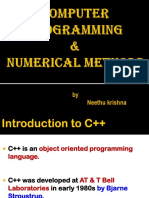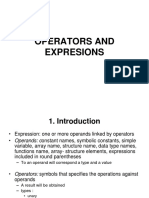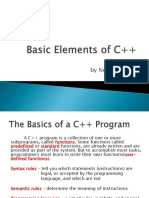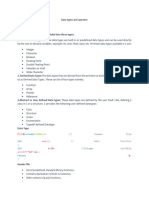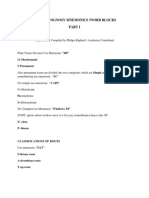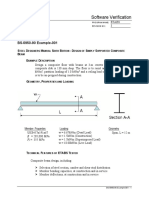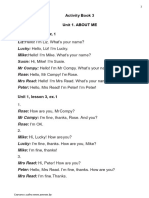0% found this document useful (0 votes)
61 views32 pagesComputer Programming-II Object Oriented Programming & Data Structures
The document discusses various C++ programming concepts including input/output streams, comments, variables, data types, expressions, operators, conditional statements, and loops. Specifically, it covers the cout and cin streams for output and input, comments in C++ using // and /* */. It also discusses variable declaration and naming conventions, basic data types like int, float, char, and their ranges. Further, it explains expressions, various operators, if/else statements, conditional operator, and for/while loops.
Uploaded by
Afraz KhanCopyright
© © All Rights Reserved
We take content rights seriously. If you suspect this is your content, claim it here.
Available Formats
Download as PDF, TXT or read online on Scribd
0% found this document useful (0 votes)
61 views32 pagesComputer Programming-II Object Oriented Programming & Data Structures
The document discusses various C++ programming concepts including input/output streams, comments, variables, data types, expressions, operators, conditional statements, and loops. Specifically, it covers the cout and cin streams for output and input, comments in C++ using // and /* */. It also discusses variable declaration and naming conventions, basic data types like int, float, char, and their ranges. Further, it explains expressions, various operators, if/else statements, conditional operator, and for/while loops.
Uploaded by
Afraz KhanCopyright
© © All Rights Reserved
We take content rights seriously. If you suspect this is your content, claim it here.
Available Formats
Download as PDF, TXT or read online on Scribd
/ 32
























